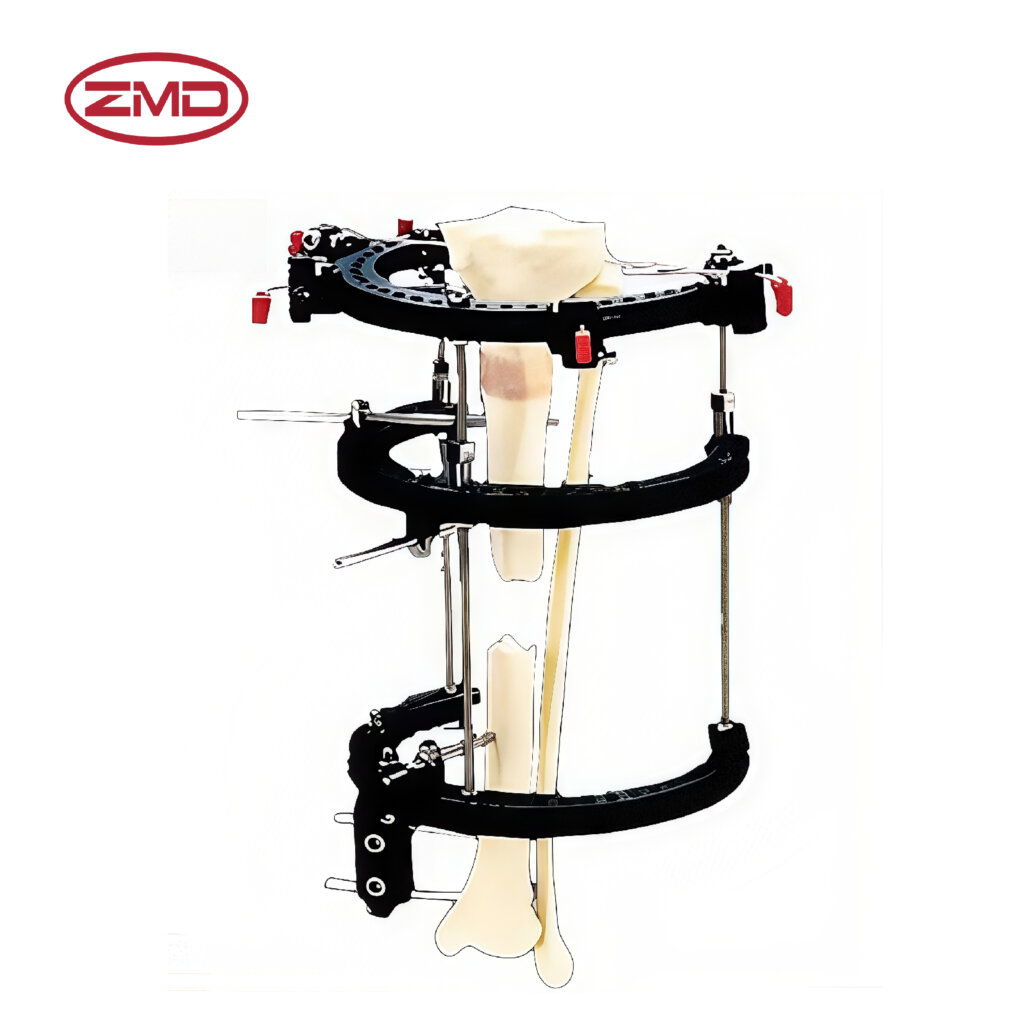
- Home
- About Us
- Products
- Trauma Internal Fixation System
- Spinal Internal Fixation System
- External Fixation
- Artificial Implants System
- Sports Medicine
- Power tools
- VSD System
- Instruments
- Medical supplies
- Blog
- Personnel Profile
- Contact Us
Phone line
| CODE | PRODUCTION | DESCRIPTION | MATERIAL |
| ZJ107 | Pennig Minifixator Lengthening Bar Short complete with Spacer,length 80mm | 120mm | S.S |
| ZJ108 | Pennig Minifixator Lengthening Bar Short complete with Spacer,length 100mm | 100mm | S.S |
| ZJ109 | Pennig Minifixator Lengthening Bar Short complete with Spacer,length 120mm | 80mm | S.S |
A: It is usually made of high-quality metal for durability. This metal is chosen to withstand the mechanical forces during the limb lengthening process and over time.
A: The spacer is used to adjust the lengthening process and provide fine-tuning. It helps in precisely controlling the distraction and alignment to optimize the outcome of limb lengthening.
A: It is suitable for many cases but may not be appropriate for every situation. Factors like the complexity of the discrepancy and the patient's overall condition determine its suitability.
A: The adjustment frequency depends on the specific treatment plan. It's determined by the medical team based on the patient's progress and the desired rate of lengthening.
A: There may be some discomfort, but proper pain management can be provided. Medical professionals can prescribe medications or use other methods to alleviate any pain experienced by the patient.
A: Generally, it is installed during a surgical procedure. This ensures proper placement and connection within the orthopedic system
A: It varies depending on the extent of lengthening needed. Different patients may require different durations based on their individual circumstances
A: Yes, it can be removed when the treatment is finished. Removal is typically done through a surgical procedure as well.
A: Risks may include infection, nerve damage, and improper healing. These risks are carefully monitored and managed by the medical team throughout the treatment process.
A: The suitability depends on the patient's condition and may vary by age. The medical team considers factors like bone development and overall health when deciding if it's appropriate for a particular patient
Oh yeah! I have to mention their payment options and discount offers, which are awesome! Those payment methods are as flexible as moving water and can be chosen freely according to our cash flow situation. And the frequent discounts, like a timely rain, have been moisturizing our financial statements time and again, and have had a rocket-like positive impact on our profits! With ZMD, I feel relaxed and at ease when it comes to purchasing!
Send us a message if you have any questions or request a quote. Our experts will give you a reply within 24 hours and help you select the right valve you want.
Book Now
If you are looking for professional orthopedic medical product solutions, don’t hesitate to contact us now!

We are an integrated manufacturer specializing in orthopedic medical industry, providing high quality and reliable orthopedic medical products to customers worldwide.
Copyright © 2024 ASK Project